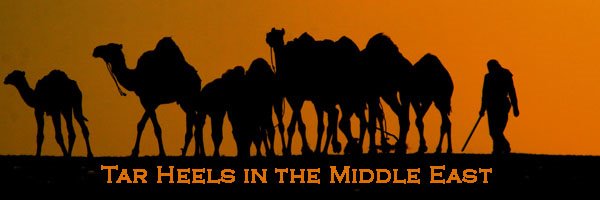I’ve been here about a week now, having spent a few days in the capital of Muscat and since moved on to Salalah. One of the first things I noticed about Oman is the cultural diversity. From the mango lassies to the samosas, the South Asian influence is particularly pronounced. As I walked around Muscat, I found my Arabic was no use in many cases, whether with a Kashmiri shop owner, a Baluchi internet café attendant, or a Tamil waiter. According to reliable sources, the population numbers 3,311,640 with 577,293 non-nationals included. I've heard much higher estimates of the number of non-nationals on the street.
These disparate flows of culture and people are nothing new for Oman. The Sultanate’s power once stretched from Zanzibar in East Africa to Sri Lanka and the cosmopolitan nature of Oman has been preserved under the leadership of Sultan Qaboos bin Taimur, the man who has ruled the country since taking over for his father in a bloodless 1970 coup. Subdued portraits of the Sultan hang high on the walls of most stores and homes. My favorite so far was at the Muscat airport departures terminal, where Qaboos’s leonine visage looked on, one hand raised in a solemn farewell. His pictures certainly lack the dress-up quality of, say, King Abdullah of Jordan. Instead, they reflect a stately man who, in the eyes of many, has been fundamental in navigating Oman toward development while maintaining traditional culture. (If you don’t believe me, you can check out his facebook page. I’m not a fan…yet.)
But, as I mentioned earlier and as the Sultan Qaboos Grand Mosque demonstrates, Oman’s traditional culture is anything but exclusivist. Completed in 2001 after six years of construction, the structure features a Khurasani carpet that was at one time the largest carpet in the world (maybe Qaboos would have more facebook fans if he boasted about that in his “about me” section); tiles from Esfahan; and design themes from different geographic areas for each wing.
 You don’t see much like this in Egypt or Jordan, partly due to money and partly due to geography.
You don’t see much like this in Egypt or Jordan, partly due to money and partly due to geography.Just as the mosque underscores the pluralist heritage of Oman (as well as Islam, for that matter), the location also belies Oman’s developmental status. The minaret of the mosque mingles with cranes in the somewhat hazy skyline. Parking lots surround the complex in a location removed from the center of Muscat.
 With a sprawling layout and mediocre public transportation, a car culture definitely exists, with Muscatis clogging the car dealership lined highways. All of this is to say that Muscat is Los Angeles, except without medical marijuana, Vincent Chase, or the Reverend Keegan de Lancie.
With a sprawling layout and mediocre public transportation, a car culture definitely exists, with Muscatis clogging the car dealership lined highways. All of this is to say that Muscat is Los Angeles, except without medical marijuana, Vincent Chase, or the Reverend Keegan de Lancie.That might be an overstatement. For one, our German tour guide described the relatively short buildings of Oman’s skyline as such (in a wicked German accent): “This is not like Manhattan. It is more like Lilliput.” All Jonathan Swift references aside, what is clear is that the coming years will be interesting for Oman. Lacking vast oil resources to sink into large-scale infrastructure / weather control projects like in Saudi or the Emirates, the Sultanate must spend its money wisely so as to ensure that the mango lassies continue to flow even after the oil dries up.

No comments:
Post a Comment